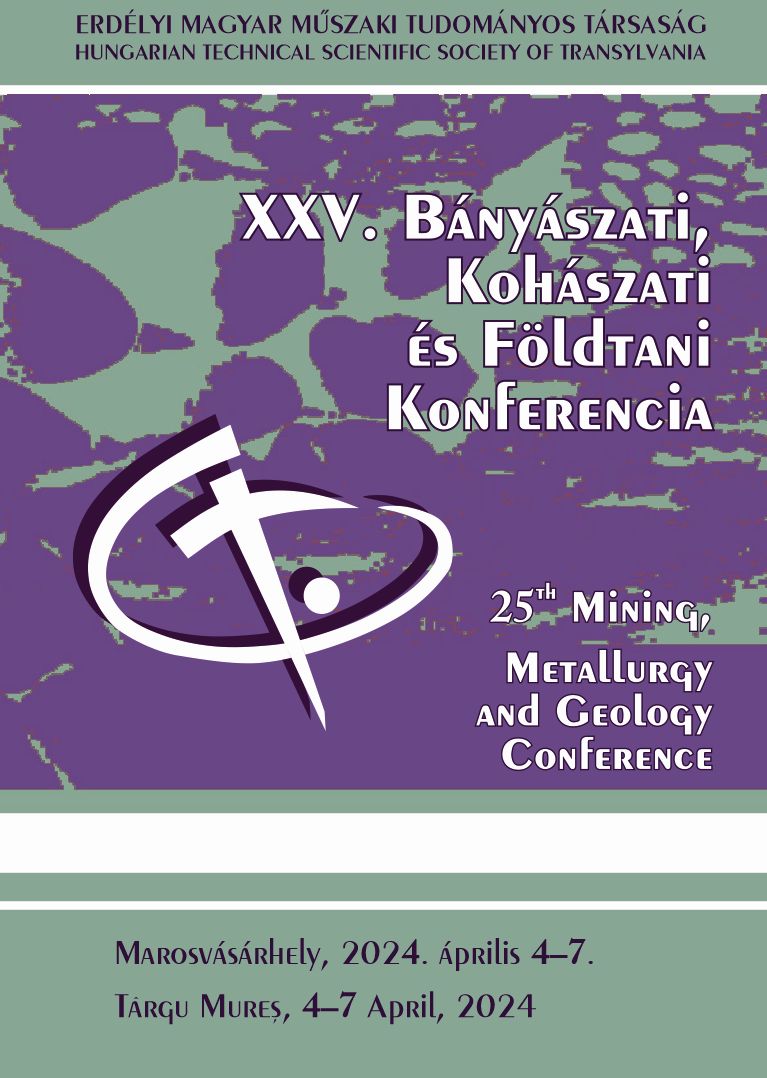Eobilateria transylvanica: a hipotetikus bilatéria ős?
Eobilateria transylvanica: the Bilaterian Hypothetical Ancestor?
Keywords:
bilateria ancestor, pharyngeal gill, ciliated palp, eopodium, relict remains, /, bilateria ős, garati kopoltyú, csillós tapogató, eopódium, reliktum maradványokAbstract
The worm – like animal hosted in Neoproterozoic deposits of the East Carpathians Rebra Nappe, has a tripartite body consisting from head, neck and six inner segments. The slightly ventral flattened body is ended by serial repeated limb – like protuberances, named eopodia, which may have had reflected the blood vascular system and muscle concentrations, related to the nervous system. This animal presented bilateral symmetry and could represent the last common ancestor of all bilaterians.
References
ARENDT, D., TECHNAU, U., WITBROTT, J., 2001: Evolution of the bilaterian larval foregut. Nature 409, 81–85.
BALAVOINE G, ADUETTE, A., 2003: The Segmented Urbilateria: a testable scenario. Integrative Comparative Biology, 43/1, 137–147.
BROWN, D.F., PRENDERGAST, A., SWALLA B.J., 2008: Man is But a Worm: Chordate Origins. Genesis, 46, 605–613.
BUDD, G.E., 2001: Why are arthropods segmented? Evolution and Development, 3/5, 332 –342.
CHEN, J.Y., BOTTJER D.J., OLIVERI P., DORNBOS Q.S., GAO F., RUFFINS S., CHI, H., LI, C-W., DAVIDSON, E.H., 2004: Small Bilaterian Fossils from 40 to 55 Million Years Before the Cambrian. Science, 305, 218–222.
CONWAY MORRIS, S., 1998: Early metazoan evolution: reconciling paleontology and molecular biology. American Zoologist, 38, 867–877.
CONWAY MORRIS, S., 2000: The Cambrian “explosion”: Slow-fuse or megatonnage? Proceedings of the National Academy of Sciences, 97/9, 4426–4429.
DE ROSA, R., PRUD’HOMME, B., BALAVOINE G., 2005: Caudal and even-skipped in the annelid Platynereis dumerilii and the ancestry of posterior growth. Evolution and Development, 7/6, 574–587.
DE ROBERTIS, E.M., 1997: The ancestry of segmentation. Nature, 387, 25–26.
DE ROBERTIS, E.M., 2008: The molecular ancestry of segmentation mechanisms. PNAS, 105/43, 1641–1642.
ERWIN, D.H., DAVIDSON, E.H., 2002: The last common bilaterian ancestor. Development 129, 3021–3032.
ERWIN, D.H., 2009: Early origin of the bilaterian developmental toolkit, Philosophical Transactions of the Royal Society B., 364, 2253–2261.
ERWIN D.H., 2020: The origin of animal body plans: a view from fossil evidence and the regulatory genome. Development 147/4, dev182899.
EVANS, S.D., HUGHES, I.V., GEHLING, J.G.; DROSER, M.L., 2020: Discovery of the oldest bilaterian from the Ediacaran of South Australia. Proceedings of the National Academy of Sciences, 117/14, 7845–7850.
FINNERTY, J.R., 2003: The origins of axial patterning in the metazoa: how old is bilateral symmetry? Intertnational Journal of Developmental Biology, 47/7-8, 523–529.
FEDONKIN, M.A., 1985: Precambrian metazoans: the problems of preservation, systematics and evolution. Philosophical Transactions of the Royal Society of London, Series B-Biological Sciences 311, 27–45.
FEDONKIN M.A., 1998: Metameric features in the Vendian metazoans. Italian Journal of Zoology, 65, 11–17.
KNOLL A.H., CARROLL, S.B., 1999: Early Animal Evolution: Emerging Views from Comparative Biology and Geology. Science, 284, 2129–2137.
MALAKHOV, V.V., 2004; New ideas on the origin of bilateral animals. Russian Journal of Marine Biology. 30/1, Supplement, S22–33.
MALAKHOV, V.V., 2016: Symmetry and the tentacular apparatus in Cnidaria. Russian Journal of Marine Biology, 42/4, 287–298.
MALAKHOV, V.V., BOGOMOLOVA, E.V., KUZMINA, T.V., TEMEREVA, E.N., 2019: Evolution of Metazoan Life Cycles and the Origin of Pelagic Larvae, Russian Journal of Developmental Biology, 50/6, 303–316.
MALAKHOV V.V., GANTSEVICH M.M., 2022: The Origin and Main trends in the Evolution of Bilaterally Symmetrical Animals. Paleontological Journal, 56, 887–937.
NIELSEN C., NØRREVANG A., 1985: The trochaea theory: an example of life cycle phylogeny. In: CONWAY MORRIS, S., GEORGE, J.D., GIBSON, R., PLATT, H.M. (szerk), The origin and Relationships of Lower Invertebrate Groups, Oxford Univ. Press, 28–41, Oxford.
NIELSEN C., 2008: Six major steps in animal evolution: are we derived sponge larvae? Evolution & Development, 10/2, 241–257.
NIELSEN, C., 2012: Animal Evolution Interrelationships of the Living Phyla. Third edition. Oxford Univ. Press, 402 pp., Oxford.
PÁSZTOHY, Z. 2012: Az Ediacara – előtti Garados Bióta - The Pre - Ediacaran Garados Biota – A preliminary report. In: Conference Vol., p.123 – 130, (Ed. J. Mika and A. David), XI. World Meeting of Hungarian Earth Scientists. Eger, 20 -25, August 2012.
PÁSZTOHY, Z., 2022: A szivacsok eredete és a megalárva jelenség – The Early History of Sponge and the Megalarva Phenomena. Conference Volume. XXIII. BKF, 52–55.
PARRY, L.A., TANNER, A., VINTHER, J., 2015; The Origin of Annelids. Frontiers in Paleontology. Palaeontology, 57/6, 1091–1103.
PARRY, L.A., EDGECOMBE G.D., EIBYE-JACOBSEN, D., VINTHER, J. 2016: The impact of fossil data on annelid phylogeny inferred from discrete morphological characters. Proceedings of Royal Society B: Biological Sciences. 283, 20161378.
SHUBIN, N., TABIN C., AND CAROLL, S., 1997. Fossils, genes and the evolution of animal limbs. Nature 388, 639-648 (14 August 1997).
SNODGRASS, R.E., 1938: Evolution of the Annelida, Onychophora and Arthropoda. Smithsonian Miscellaneous Collections, 97/6, 1–159.
VALENTINE, J.W., 2002: Prelude to the Cambrian explosion. May 2002. Annual Review of Earth Planetary Sciences, 8/30, 285–306.
VALENTINE J.W., 2004: On the Origin of Phyla. University Chicago Press. 613pp., Chicago.


